I built the following circuit

simulate this circuit – Schematic created using CircuitLab
The clock has an amplitude of approx. 5 VDC. It's provided by a 555. I used two different values of R2 for my tests. The first test was R2 = 6 ohms. The second test was R2 = 10000 ohms.
I used my oscilloscope to record the clock signal and the base voltage. The blue graph is the base voltage, the yellow graph is the clock voltage. This is the result of the first test.
This is the result of the second test
As you can see the base voltage returns to 0 in the first test almost immediately.
In the second test, the base voltage takes approximately 30 microseconds to return to zero. During this time, the transistor continues to conduct. Why does this only happen when the collector-emitter current is low?
Test of solution provided below
I located a SR306 diode. Datasheet here:
http://pdf.datasheetcatalog.com/datasheet/diodes/ds23025.pdf
This diode is a poor choice for this application, but still applicable.
I set R2 = 10000 ohms for this test. R1 is still 100 ohms. Here is the waveform again with the existing circuit.
The switching of the transistor still lags behind the clock.
Here is the waveform with the diode connected from the base to the collector
The transistor follows the waveform faithfully now. Here is a closer view of the switching transition
It still takes around 2000 nanoseconds for the transistor to turn off, but this agrees with datasheet.
Interestingly there is some oscillation on the base, but it is not significant. It has an amplitude of only 100 millivolts.
